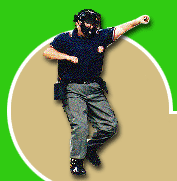Little League Baseball
has received numerous inquiries from its volunteers
and media regarding the safety of non-wood bats.
Background
Recent innovations
in metal alloys have allowed a reduction in the weight
of some models of bats, while allowing the bats to
remain in conformity with the length and diameter
guidelines in the various divisions of Little League
Baseball and Softball. Some volunteers and those in
the media have raised questions about whether the
weight of the bats used in Little League games should
be limited, relative to the length.
Non-wood bats were
first developed, partly through research by Little
League, as a safer and more cost-effective alternative
to wooden bats. Non-wood bats were first used in Little
League in 1971, and have almost completely replaced
wood bats in all divisions of play. Wood bats, which
can break in half if not used properly, are now widely
used only in professional baseball.
As a member of USA
Baseball, the governing body for all amateur baseball
in the U.S., Little League Baseball follows the recommendation
of the USA Baseball Medical and Safety Advisory Committee.
The position of the Advisory Committee is that further
research and data needs to be collected before any
changes are made to Little League rules regarding
the weight of bats. There is currently no rule in
any division of Little League Baseball or Softball
that places a maximum or minimum limit on the weight
of bats.
Statement
At present, injury
data in all divisions of Little League Baseball and
Softball shows there has been a 76 percent decrease
in reported injuries to pitchers as a result of batted
balls over the eight-season period beginning in 1992.
Data on injuries to pitchers is being used because
the pitching position is nearest the batter, and the
pitcher is the least likely among all fielders to
be fully prepared when the ball is hit.
During that same eight-year
period, the number of injuries to other fielders as
a result of batted balls has remained relatively constant
or decreased. A summary of the data is attached, along
with participation figures and the current bat specifications
for each division.
In 1997 alone, nearly
60,000 children ages 5 to 14 were treated in hospital
emergency rooms for in-line skating-related injuries,
according to the National Safe Kids Campaign (NSKC).
Among the same ages in the same year, more than 150,000
football injuries and 200,000 basketball injuries
were treated, NSKC reported. That year, NKSC said,
more than 125,000 baseball and softball injuries were
treated in hospital emergency rooms nationwide. However,
only 70 injuries in Little League Baseball and Softball
activities, ages 5 to 18, were reported that year.
Annually, less than
three-tenths of one percent of U.S. Little Leaguers
are injured in games or practices to the point of
requiring medical treatment. Injury data for Little
League are obtained through analyzing medical claims
on accident insurance provided by Little League though
CNA Insurance. More than 95 percent of the chartered
Little League programs in the U.S. are enrolled in
the Little League Group Accident Insurance plan.
In conclusion, there
appears to be no indication that would cause Little
League to mandate a limit on the weight of bats, based
on the most current facts. Statistics show that Little
League’s record on safety continues to be outstanding
not only among youth sports, but in baseball and softball
in particular.
However, Little League
Baseball will continue to monitor this situation closely,
and will react accordingly and appropriately when
indicated.
FACTS AND FIGURES
Total Reported Injuries
to Pitchers (Batted Ball) in the U.S. by Age Group*
1992 1993 1994 1995 1996 1997 1998 1999
Little Lg. Baseball (ages 5-12) 120 110 109 73 53
41 33 22
Jr., Sr., Big Lg. Baseball (13-18) 25 33 25 16 22
12 10 6
Baseball Totals 145 143 134 89 75 53 43 28
Little Lg. Softball (ages 5-12) 13 10 8 9 11 7 7 5
Jr., Sr., Big Lg. Softball (13-18) 5 11 11 7 7 10
5 5
Softball Totals 18 21 19 16 18 17 12 10
GRAND TOTALS 163 164 153 105 93 70 55 38
Participation Figures
in Little League Baseball and Softball, U.S.*
1992 1999
Baseball 2,389,320 2,518,755
Softball 299,910 392,370
Totals 2,689,230 2,911,125
* Injury statistics
are those reported as a result of claims filed by
those leagues that have purchased group accident insurance
offered through Little League Baseball. More than
95 percent of the local Little Leagues purchase group
accident insurance through Little League Baseball,
Incorporated.
Maximum Bat Length/Diameter
Specifications
in Little League Baseball/Softball
Age Range Max length Max diameter
Baseball 12 year olds and under 33 inches 2 1/4 inches
Baseball
13-16 year olds 34 inches 2 3/4 inches
Baseball 16-18 year olds 38 inches 2 3/4 inches
Softball 12 year olds and under 33 inches 2 1/4 inches
Softball 13 year olds and over 34 inches 2 1/4 inches
Pitching Distances
Age Range Distance
Baseball 12 year olds and under 46 feet
Baseball 13 year olds and above 60 feet, 6 inches
Baseball Junior League 13-15 year olds (optional)
54-foot
Softball 12 year olds and below - Majors 40 feet
Softball 12 year olds and below - Minors 35 feet
Softball 3 year olds and above 40 feet

